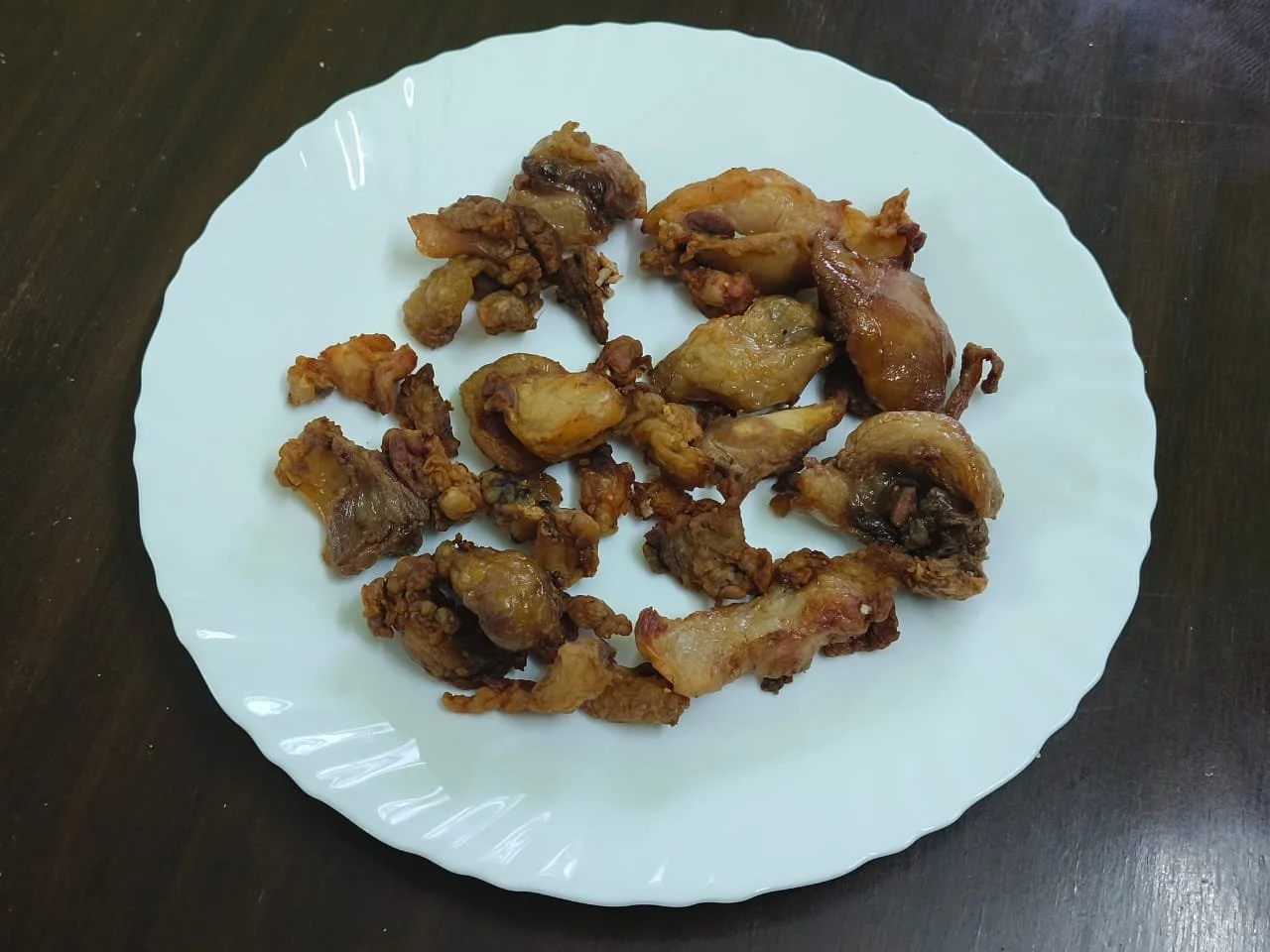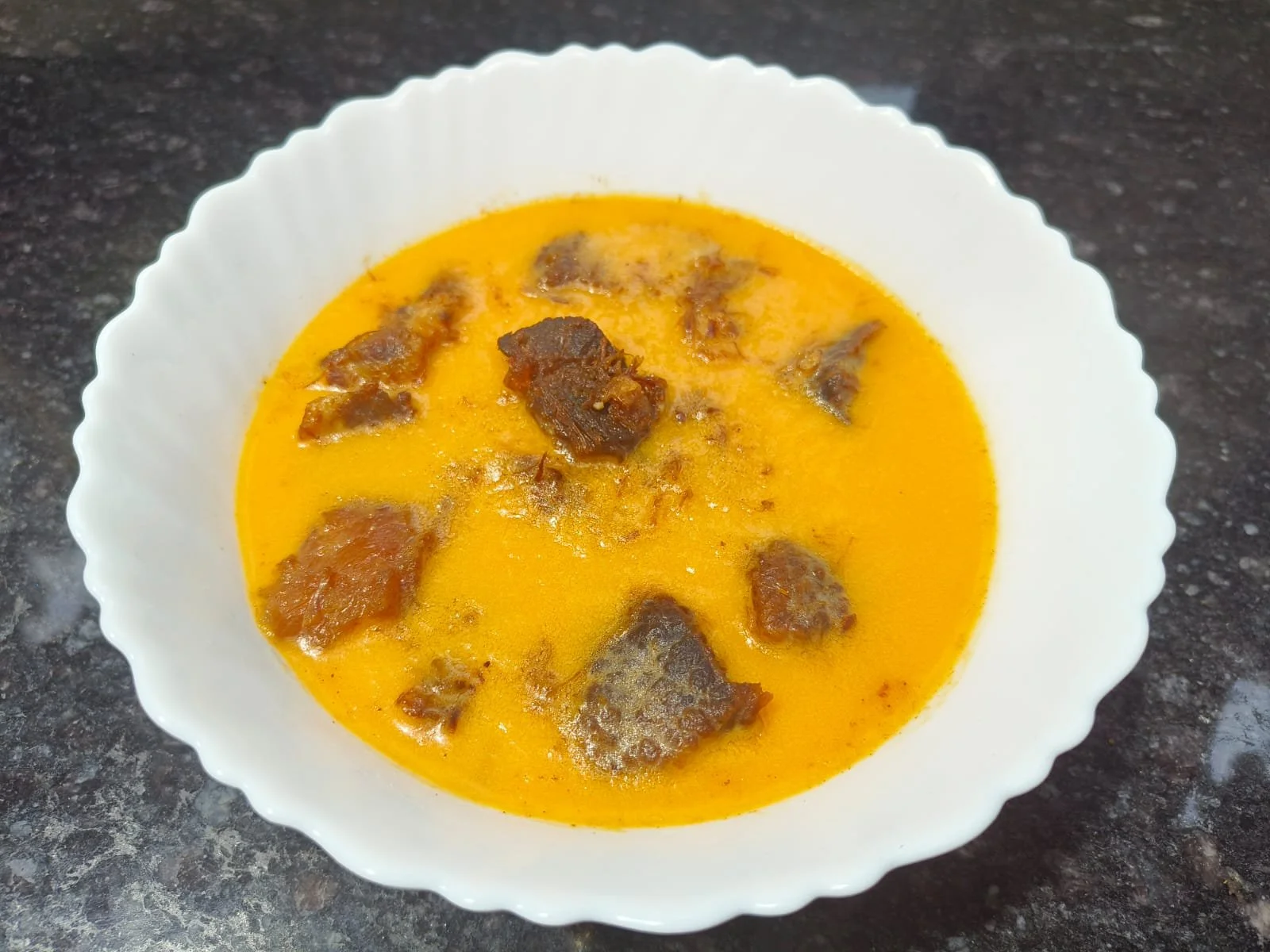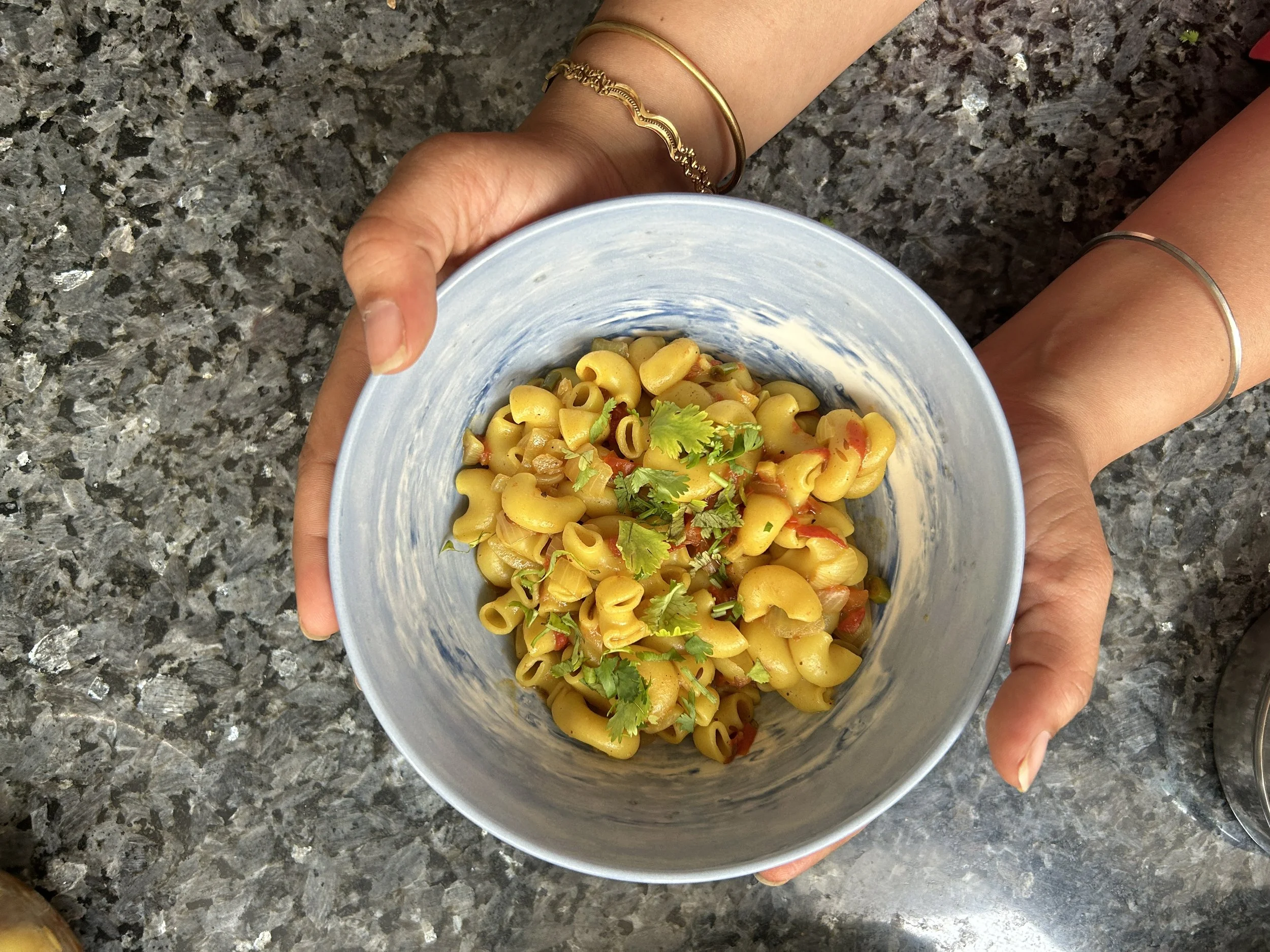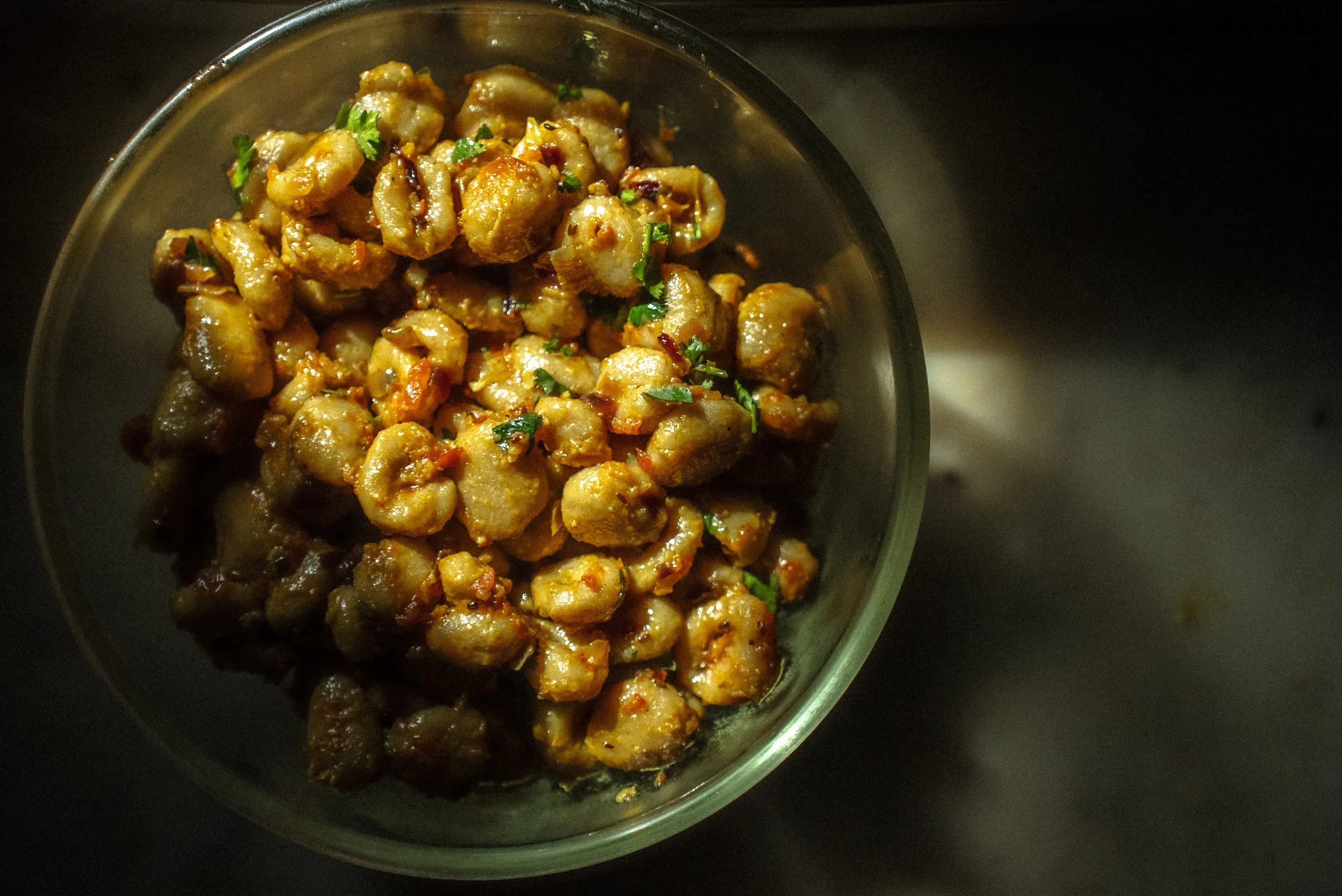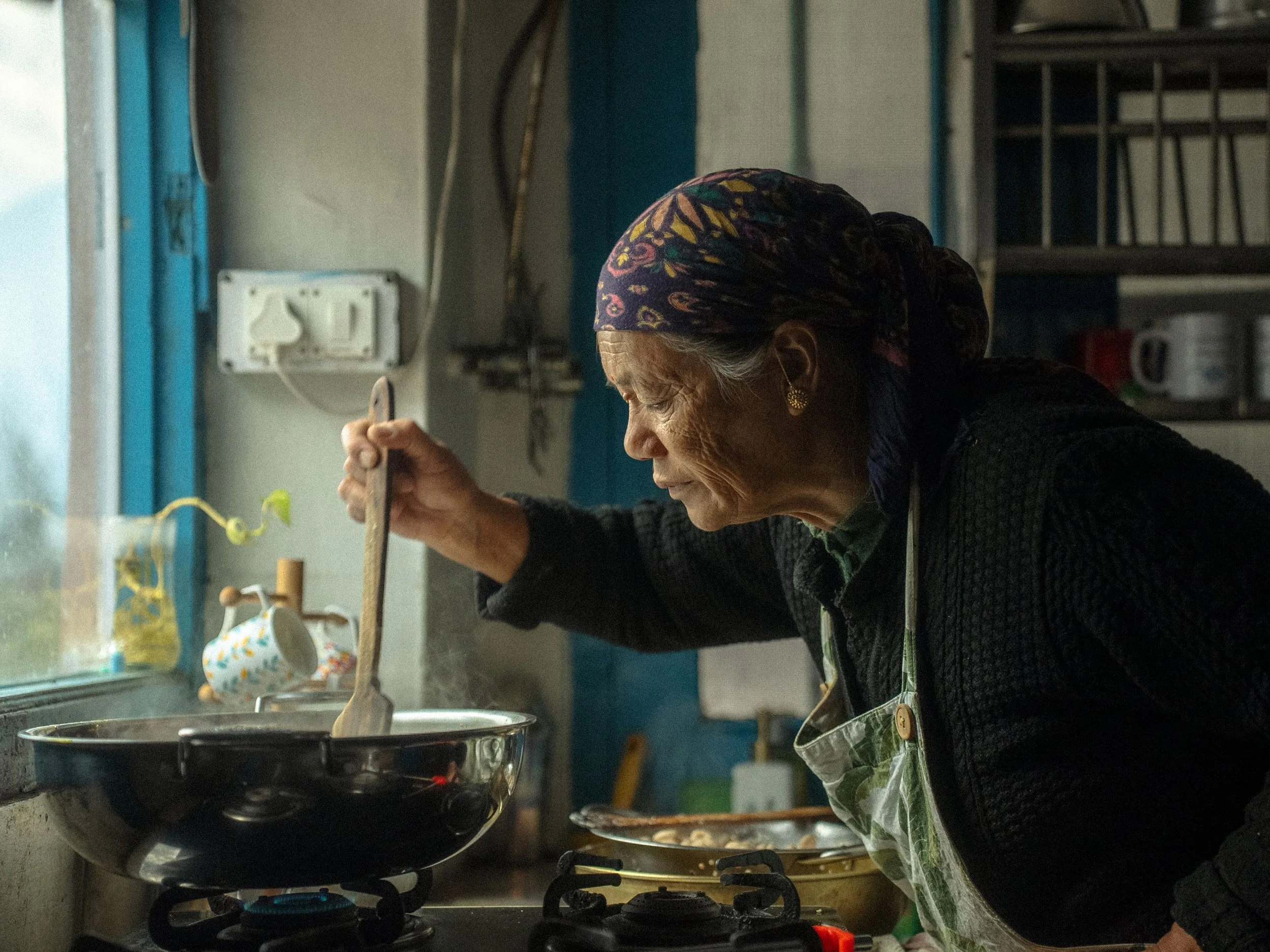Forgotten Fat: How Goat Tallow Shaped the Flavours of Bihari Muslim Cuisine

Among Kolkata’s Bihari Muslims, Bakrid is marked by family, feasting, and the quiet labour of tradition. At its heart is goat tallow — rendered patiently at home and used to cook sweets and sukha gosht. Once made with beef fat, these recipes now adapt to changing times and constraints, without losing their essence. In these kitchens, tallow isn’t just fat; it’s continuity and cultural inheritance. Mahwish Paikar takes us behind the scenes of a ritual that keeps heritage alive.
Ever craved a crisp, yet pillowy maide ka paratha? I do, often. It is the paratha made in my home after Bakrid, shallow fried in goat tallow.
An unsaid rule in the house was to never to eat a paratha while cooking was underway, and the tawa was still on the flame. It was only to be had once the fire was put out, and some water had been sprinkled over the tawa. Otherwise, all important events of life, including jobs and marriages, would come to a sudden and abrupt halt.
Goat tallow is rendered at home soon after Eid-Ul-Azha (or Bakrid). The snowy white, firm tallow, similar to coconut oil, is preserved in big batches to last through the year.
Goat tallow is rendered in two ways: one, exclusively of fats, extracted from around different organs of the sacrificed goat. This creamy tallow is meant for frying parathas, pyazoo and pakodas. It is also added to minced meat while making kebabs as it improves texture and mouthfeel.
A by-product of clear tallow is churri, dehydrated, hard and crisp tendon and other tissues that are residues from fat. As children, we would snack on freshly minted hot churris, like chips, sprinkled with black salt and roasted cumin. Churris are also preserved for rainy days, when they can be added to eggplant or pumpkin gravies for a little extra flavour and texture.
Churri is a by-product of tallow, a dehydrated, crisp tendon and other tissues that are residues from fat.
Goat tallow has quite a high smoke point, which makes it suitable for high-heat cooking, frying and roasting. It is rubbed into refined flour to make baked sweets like bakarkhwani or khormi, where it brings a light flakiness. It is used as a substitute for cooking oil in meat and vegetable dishes, lending a unique and complex flavour profile.
Fresh goat tallow.
The second way of rendering fat is when pieces of meat, along with chunks of fat, are cooked are cooked down with a few spices. As moisture from the meat is released and evaporates, the mutton pieces remain, in a sea of tallow, hard on the outside and moist, juicy inside. This saffron-hued tallow is infused with a deeply umami flavour.
Occasionally, when we ran out of tallow, our supply was restocked from the butcher. Ghee was expensive, and mostly meant for the men of the house. Tallow or lard, either goat or beef, is an acquired taste. Anything cooked in lard has to be consumed with zestful urgency. Otherwise, the melt-in-the-mouth feel would give way to something heavy, quickly setting inside the mouth.
A signature dish made during Bakrid is sukha gosht — lightly dehydrated goat meat submerged in a sea of goat tallow. It has been here with us for generations.
We are Bihari Muslims, who migrated from Bihar due to the region’s horrific famines, and the deadly communal riots of 1947. We are now settled in the iconic mini Luckhnow, Metiabruz, a suburb of Kolkata that was made famous by Nawab Wajid Ali Shah of Awadh after the British annexed his kingdom, deposed and deported him to Kolkata in 1856. The Nawab settled along the bank of the river Hooghly, near a tiny suburb of Calcutta, with his army of bawarchis. Being a connoisseur of good food, his culinary influence cannot be ignored in the distinct cuisine of Mughlai dishes of Kolkata.
Sukha gosht is common to many Muslim households in the Indo-Gangetic belt and even south India. It is made amongst the Muslim communities of Bihar, Jharkhand and Uttar Pradesh mostly. As part of acquired cultural experiences, the Muslim Bengalis of Bengal also use this method of meat preservation during Bakrid. Early on, beef tallow was used, but due to various political impositions on our eating habits and concerns about accessibility to beef products, most families have shifted to sacrificing only goat and lamb during Eid-ul Azha.
As a little girl, I remember my nani, our matriarch, Zaib un Nisa, making sukha gosht during Bakrid. A single piece of sukha gosht and a few drops of flavourful orange tallow on a plate of steaming hot rice after school, was my idea of sublime bliss.
This is my mother’s recipe for sukha gosht.
SARWAR YASMIN’S RECIPE FOR SUKHA GOSHT
Ingredients
3 kg mutton cut into medium chunks (preferable marble streaks cut from the shoulder and forelimb areas)
500 gm goat fat, cut into smaller pieces (brisket trimmings or fat from around the kidneys and intestine)
6 tbsp mustard oil
2 tbsp salt
2 tbsp black pepper powder
2 tbsp chilli powder
2 tbsp garlic paste
2 tbsp ginger paste
Method
Assemble the goat (meat and fat) in a big aluminum vessel. Add the spices and mustard oil. Mix the contents.
Cover and steam for 10 minutes on high flame and the next 15 minutes on low flame. The meat and fat will release moisture but would not tenderise in the first round. Uncover the lid and let the steam escape and cool.
Repeat the steaming process twice a day for the subsequent three to four day. By now the flavourful fat would have been rendered and submerged the meat chunks completely.
This batch of meat is then kept in a cool and dry place covered by a light muslin cloth for longer periods without the risk of being spoiled.
The sukha gosht can now be had with steamed rice, added to vegetable curries or even added to the savoury Kolkata style Biryani.
The meat is extracted through re-heating and gets polished off in a matter of a few days. The goat tallow is further heated, decanted, carefully separating it from any sediment of meat shreds and preserved in steel boxes. They are often preserved up to the next Bakried.
SARWAR YASMIN’S RECIPE FOR PARATHA
Ingredients
500 gm refined flour
6 tbsp refined oil
2 tsp salt
4 tbsp sugar
220 ml hot boiling water
A pinch of ajwain (carom seeds) or kalo jeere (nigella seeds) (completely optional)
Method
Mix flour, refined oil, salt sugar and only a pinch of ajwain/ kalo jeere (nigella seeds), only if you like their flavour.
Make a trough in the midst of the flour mix creating space for the hot boiling water. When the water starts boiling vigorously, immediately pour into the trough and mix with a ladle as much and as quickly as you can.
Now let it cool before you can start using your hands to make the dough. Boiling hot water denatures proteins, reducing gluten.
After making a dough ball, slather it with some more refined oil. Cover and let it cool for an hour before proceeding to make balls for the parathas.
Roll them out, layer by layer and toss them up the tawa with generous helpings of the tallow or ghee.
Mahwish Paikar is an ardent culinary enthusiast who loves spending time in the kitchen and on food writings but also unintentionally happens to be a Deputy Commissioner of Revenue under GST.
ALSO ON GOYA
